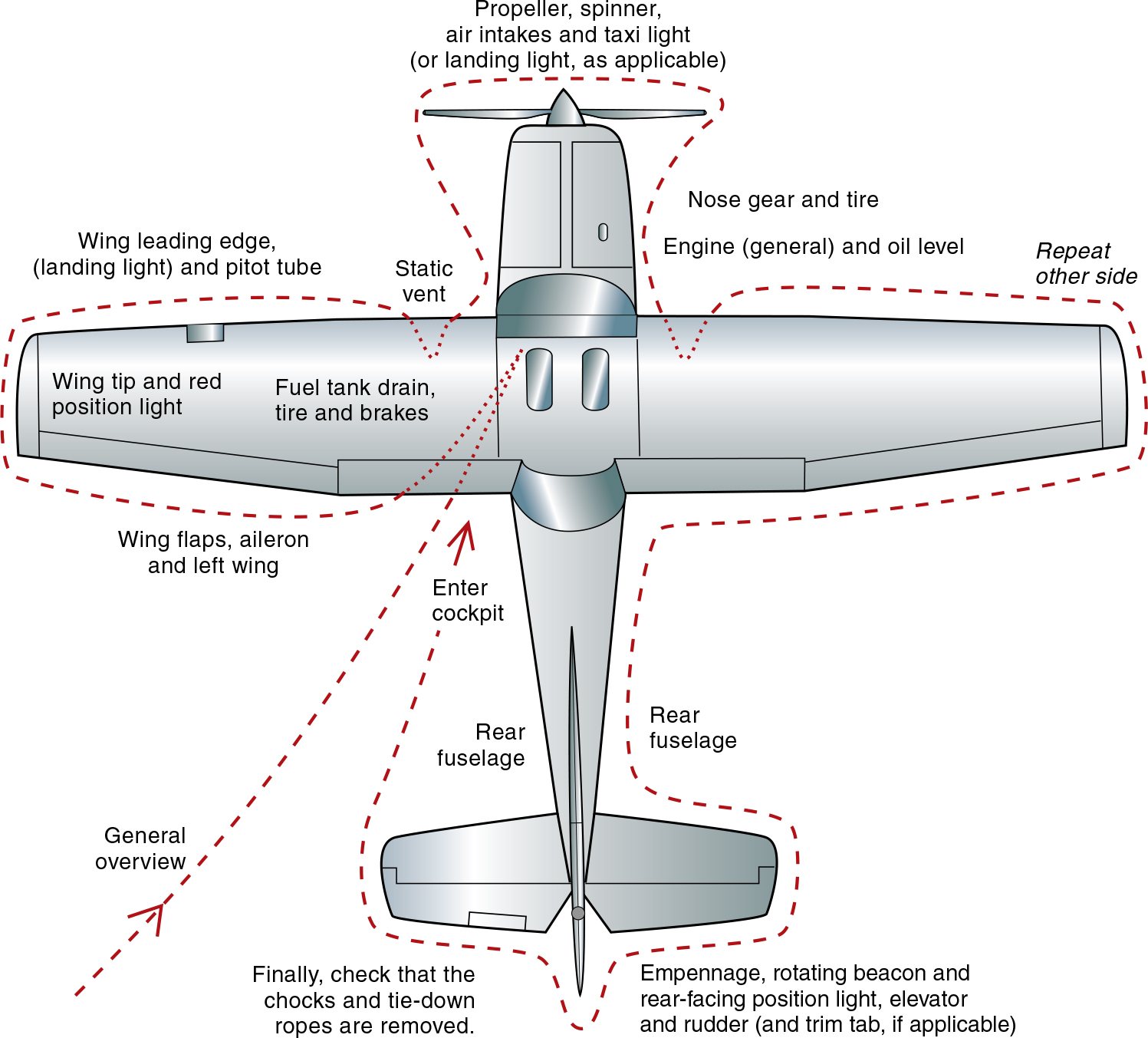Preflight Inspection
Jump to navigation
Jump to search

A preflight inspection is a systematic examination of an aircraft conducted by the pilot, or in some cases, ground crew, before each flight, to ensure the aircraft is in a condition fit for safe operation.
Here's a more detailed breakdown of what a preflight inspection entails
Purpose
Safety First
The primary goal is to identify and address any potential issues or problems with the aircraft before takeoff, ensuring a safe flight.
Familiarization
It allows pilots to become thoroughly familiar with the aircraft's systems and components.
System Verification
It verifies that all systems are functioning properly and that the aircraft is in optimal condition.
What's Involved
- Visual Inspection: A thorough visual inspection of the aircraft’s exterior, including the wings, tail, engine, and landing gear, looking for signs of damage, leaks, or loose parts.
- Functional Checks: Testing various systems and components, such as brakes, lights, radios, and instruments, to ensure they are working correctly.
- Checklists: Pilots typically follow a detailed preflight checklist provided by the aircraft manufacturer, ensuring that all essential checks are performed.
- Documentation: Reviewing relevant documents, such as the flight manual, weight and balance data, and airworthiness certificates.
- Weather and Flight Plan: Checking the weather conditions and reviewing the flight plan to ensure the flight is safe and feasible.
- Fuel and Oil: Checking fuel levels and quality, as well as oil levels and condition, to ensure the aircraft has sufficient power and lubrication.
- Tire Condition: Inspecting tire condition and inflation levels.
- Emergency Equipment: Verifying that emergency equipment, such as fire extinguishers and first-aid kits, are present and in good condition.
- Cockpit Checks: Ensuring that all cockpit controls, switches, and instruments are in the correct position and functioning properly.
- Propeller Inspection: Inspecting the propeller for damage, cracks, or missing hardware.
- Pitot Tube Inspection: Inspecting the pitot tube for any obstructions or damage.
